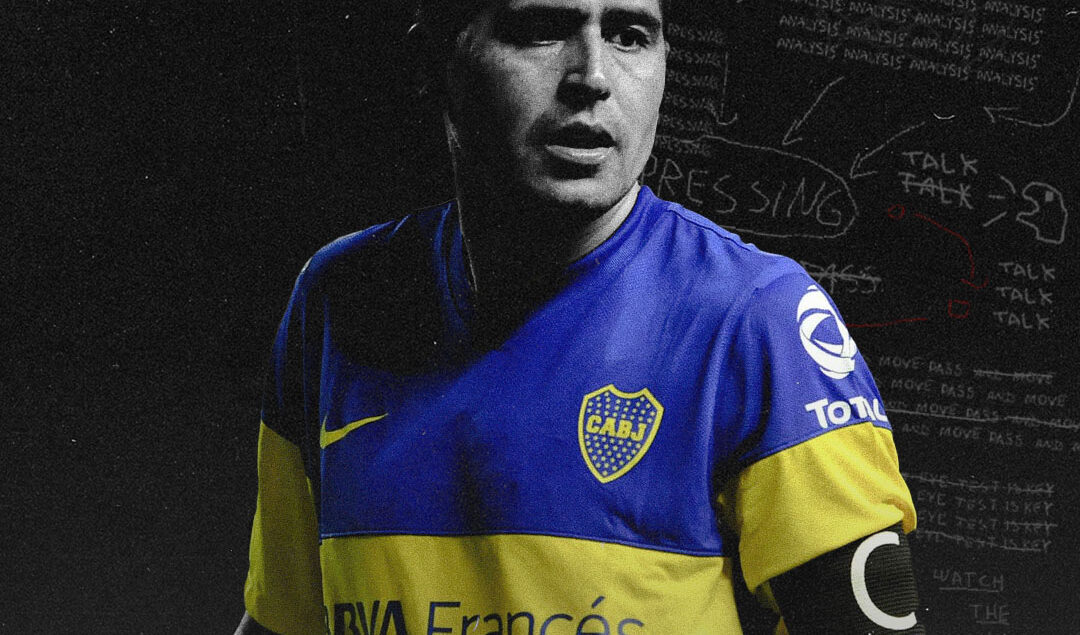Juan Roman Riquelme: The Last of His Kind
If you were to ask an Argentinian who their greatest ever footballer was, you would expect to hear 2 names – Lionel Messi and Diego Armando Maradona. However, fixed between these two footballing Gods, there is a 3rd, under-appreciated name that would be uttered – Juan Roman Riquelme.
Juan Roman Riquelme is an incredibly important figure in the history of football. El Torero, the ‘bullfighter’, was the last of a dying breed, signifying the transition of creative, expressive football to the automative nature of modern day. Everything the number 10 shirt encapsulated died the day Riquelme retired.
Ronaldo Luís Nazário de Lima and the Riddle of a God Amongst Men
Juan Roman Riquelme started his career at the illustrious Argentines Juniors FC, also known as the ‘Cradle of the Stars’, with notable graduates such as Diego Maradona, Fernando Redondo and Alexis Mac Allister. Described as slight of frame, shy and suffering from chronic fatigue, there was no doubt in the minds of the Buenos Aires scouts that Riquelme was the most promising talent in Argentina.
Boca Juniors were keen to secure the services of such a talent, signing ‘Roman’ for $800,000 at just 18 years of age. As a boyhood Boca fan, Riquelme was living his childhood dream. At Boca Juniors, Riquelme was considered the understudy to Diego Armando Maradona, learning his trade from the master.
On just one occasion did the apprentice and the master line up together, against Riquelme’s former side in fact, but the chemistry between the duo was evident. To put it simply, they were just on the same footballing wavelength; two vastly superior players exchanging in intricate inter-play, toying with the opponents. The pair did not play with each other again for Boca Juniors, after a failed drug test from Maradona ended his career.
Teofilo Cubillas:
-Won the 1975 Copa America
-Led Peru to their only 2 World Cup quarterfinals
-Only player to score 5+ goals in 2 World Cups with Thomas Muller & Miroslav Klose
As he celebrates his 75th birthday, @TeclabYousef pays homage to El Nene.https://t.co/FHG2ctKagI pic.twitter.com/Tmm1MnkaN4
— Breaking The Lines (@BTLvid) March 8, 2024
Without hesitation, Riquelme filled the Maradona-sized Boca Juniors hole. But not by attempting to replicate his idol, but by playing his own unique style. Unlike Maradona, Riquelme did not possess the physical traits to control a game. However, El Torero had the footballing IQ to dictate a game like no other, leading Boca to glory between 1998-2002.
As Riquelme burst on to the scene with Argentina, there were lazy comparisons between Maradona and Riquelme. They both played the same position, wore the same number 10 and captivated crowds, but that is where the comparison concludes. Unlike Maradona, Riquelme did not possess the physical traits to win games. Languid and leisurely, Riquleme’s game was built upon the processing speed of his mind and feet.
He could not sprint past 4/5 players like Diego, but he could beat 4/5 players with his ball manipulation and acute constant awareness of his body orientation. There was one underlying similarity between the two however – their utilisation of their strength, developed after years of street football against grown men. Both could ride challenges, bouncing opponents off of them with their unsuspecting strength.
Riquelme was known in Argentina as an ‘enganche’, quite simply translating to ‘the hook’. The role of an enganche is to hook the midfield and attack together. This role was perfect in maximising Roman’s strengths. The foundation of his game was based upon his elite footballing IQ and technical security with the ball.
As an enganche, Riquelme could float in areas of the pitch where his team truly needed him, picking up the ball and creating goal-scoring opportunities for his teammates out of thin air. In this role, Riquelme was the heartbeat of the team. Every sequence in possession went through Roman, he was effectively the main reference point, hooking his teammates to create beautiful football.
The most notable moment of this era was Riquelme’s legacy-defining performance against Real Madrid in the Intercontinental Cup 2000, where he announced himself to the world, facing arguably the greatest holding midfielder of all time, Claude Makelele. What ensued in this fixture was simply the destruction of Makelele.
By 1958, Eduard Streltsov had:
-Scored 18 goals in 20 matches for the USSR
-Won an Olympic gold medal
-Finished 7th in the Ballon d’Or ranking
And yet, just when he looked set to play in the World Cup, the 20-year-old was sent to the Gulag.@HE_Ftbl:https://t.co/FZg1GAjatb pic.twitter.com/1yeKmgdrUL
— Breaking The Lines (@BTLvid) September 17, 2024
The Frenchman has never struggled like he did against Roman, he could not get close to him. Riquelme, optimising his strength and twitchy feints, managed to drag Makelele into uncomfortable wide areas, creating space for his teammates to capitalise on. Ultimately, this performance earnt Riquelme his big move to Real Madrid’s rivals, FC Barcelona.
Riquelme’s time at FC Barcelona under Louis van Gaal signified the unfortunate and inevitable future of his kind. Under the Dutchmen, the system took precedence over individuals. In this system, every action had to be executed within the wider context of the collective good, effectively ripping individualism from his players. Throughout his career, Riquelme thrived in being allowed to interpret the beautiful game, having the technical ability to understand what is required for the team.
When examining the current state of modern football, it is now universally accepted that militaristic tactical approaches are successful. But when considering the sport holistically, I wonder just how many Juan Roman Riquelme’s have been passed up on due to the current demands on players. The last traces of individualism are being stripped back to basic footballing roles, like cogs in calculated systems.
By: @CounterPressers
Featured Image: @GabFoligno / LatinContent / LatinContent WO
